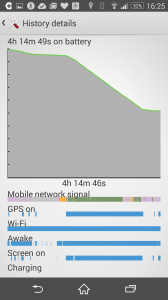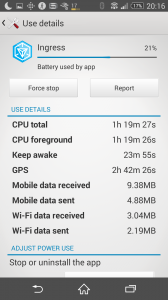The idiocy of the Hashtag
Every day I am reminded of the Idiocy of the Hashtag. Twitter is a conversational medium where the more we converse the more addictive the social network becomes. Every single @ reply was a reaction to what we said or shared. Connections between users were strong and so the network effect took twitter from being a strange experiment in 2006 to being a social network from 2007-2009. In those days we engaged with people directly.
Social media marketers, people with families and other priorities came to twitter and decided that they would indoctrinate people in to seeing twitter as a broadcast rather than conversation tool. Broadcasting did away with the conversation. It replaced the conversation with buzz words like ROI (return on investment) and other buzz terms.
From a conversational medium where everyone talked directly to everyone else these “experts” hijacked the conversation and encouraged the use of the hashtag. The hashtag took person to person communication, encapsulated it in a hashtag and neutralised the individual to individual communication channels. Individual to individual communications are what makes all social networks addictive. If I believe that someone wants to listen to me, to talk, to exchange ideas then I am likely to make time for them, to read what they have to say, to create a personal connection. That personal connection had me travel to Paris, London, Geneva, Lausanne, Lille and other destinations.
Imagine that twitter was still a conversational medium. Imagine that we established personal connections with the event organisers. Imagine that instead of a hashtag we were talking with the twitter account of event organisers. Imagine for a moment that twitter was seen as networking, that socialising on this network was not seen as a waste of time. Imagine that it was seen as a wise investment of time.
I was at two international events last month in Geneva and I had my laptop and a data connection (or two if we count event wifi). I could have listened and live tweeted the events and I could have engaged people socially. I could have engaged with the panel and the speakers.
They want me to use a hashtag. I refuse to use hashtags because a hashtag is not a conversation. A hashtag is metadata. Metadata should be used to help with threading but should not be the conversation. The conversation, comments and thoughts should go directly to the organisation. The impact of a conversation is far stronger than a hashtag.
A hashtag is solitary, is lonely, is disjointed, fails to engage. We see it’s weakness every time an event takes place. I was at one event where I saw that the hashtag only appeared in tweets by the event organiser. The only other place it appeared was in retweets. If you work as a social media marketer you need to engage with people. You need to get people to reply to your tweets, not tweet a hashtag. Event twitter accounts should serve as a conversation hub. They should trigger groups of people at the event and following the event remotely to converse, to share what they think, what they do, who they need to help them.
There are two strengths to twitter that very few people use. These are the ability to connect with like minded people before an event, so that by the time you meet them in person you can proceed with a collaboration rather than small talk and secondly to connect with other people after an event, to establish more personal connections.
Remember that twitter is a 140 character medium. Twitter is great for short conversations and quick updates. It lacks in substance when it comes to sharing content. Facebook, Google Plus are better when what you have to share takes more than 140 characters. Facebook and Google Plus allow you to build connected communities in a way that is impossible on twitter. Both Facebook and Google Plus have threading, have topic separation and more. They are modern web forums. Twitter is a chat room. Use the web forums to have threaded conversations around specific events and panels and use twitter to establish personal connections with event attendees and others.
Yesterday Twitter decided to allow people to follow 5000 twitter accounts. “While it’s entirely possible to see a lot of activity when you’re following 2,000 accounts, the 5,000-user limit increases the chances that you’ll see something interesting.” Social network stickiness relies on familiarity and a personal connection. If you follow 5000 accounts there is an excellent chance that you will fail to personally engage with any of these accounts. As a result twitter will be the place you visit because of hype rather than personal interest.
Twitter is a conversation medium that has identified itself as a broadcast medium which is why there are so many spammers present today. It has encouraged people to have millions of followers, it has encouraged people to follow other people whom there is no chance of personal engagement. They have encouraged their user base to listen rather than interact. Look at the million follower accounts and how they idealise this, rather than the more manageable 300 person limit.
Three or four years ago there was some discussion on the number of people that individuals could know well and that number was low. They said that we could get to know about three hundred people well. This means that if we’re on twitter we should not follow more than three hundred people. We should follow those whom engage with us. We should make time available to those who make time available for us. We should make sure that we have personal connections with as high a percentage of those we engage with in social media as possible.
When twitter was still a social network and twitter celebrities were still normal people we could converse with iJustine, Sarah Austin, Chris Brogan and many others. With Seesmic we could connect with Scoble and Le Meur. In the early days we could create warmer connections because there were fewer of us and attention was not as costly as it is today. Essena O’Neill is one of the people who came to social media too late. She managed to have more than half a million followers which is fantastic for the ego. Half a million followers would make most people happy.
She also set up a website to fight against what she described as the cult of social media. She deleted 2,000 photos on Instagram that, she said, “served no real purpose other than self-promotion”, and scrapped her other social accounts.
Marketers misled people. Shareholders got Social media companies to focus on the wrong thing. Social Media is a social medium. Social media is a method by which for people to communicate with other people with similar passions. Social media is about conversations between individuals. The social media landscape should be about you and I becoming friends. It should be about writing blog posts, sharing images of adventures and more. Social media should complement our physical social life. By Physical social life I only mean the social life with people whose hands we can shake, with people we can hug and with people we can have adventures with.
The idea that each of us should create a mass following is wrong and it is destructive. It is wrong because most of us are not that interesting and we do not travel so much as to find thousands of like minded people. We should focus on a small tight network of people. I found that small tight network through Glocals. For about two years I was part of the Glocals Geneva Scuba diving community and for three years I have been part of the Glocals Activ’events group.
In London social networks got me to participate in tweetups, barcamps, tuttle meetups and more. Each of these events saw me meet with and perpetuate social media friendships that were friendships in the physical world. Some of these friendships are now eight years old. These friendships also saw me at LeWeb and seesmeetups. These friendships are not fleeting. Some of them are over a decade old, from before “Social Media” days.
This shows that if you are honest, if you are open and if you are genuine in your use of social media you can establish friendships. The conversations are an exchange of ideas, loves, passions and concerns. Twitter calls them “followers” but I call them friends. I often speak of “twitter friends” because some platforms are great for news, others are great for sharing images and yet more are good for conversations or debates.
I came back to blogging because I grew tired of the hyposphere. A few weeks ago I started to call Facebook, twitter and mainstream media the Emotional Media. Hard news and information were far harder to find. Conversations and personal connections have also become a distant memory. Social Media has been hijacked by commercial interests to make money for people whom are not aware of the damage they are doing to social networks. I see social networks as a fantastic place for introverts to socialise. I see social networks as a very nice way for introverts to be extroverted, to meet new people, and to create relationships, rather than to sit in the background. Marketers hijacked that space. Essena grew up at the height of the Emotional Media. She was indoctrinated to believe that follower counts, likes, favourites and non conversational measures of success were important. She was never told that social media should be about personal connections, about individuals.
As a person who has been online almost every day since 1996 I grew up with the world wide web and so I have seen it’s progress over the years. I formed my character at the same time as the world wide web and then social media formed their own. Let’s Be Game Changers is interesting because  Essena is part of the generation who was born after the World Wide Web. She came to this space when marketers were distorting children and teenage values. They put importance on the wrong things. Let’s Be Game Changers is a way of opposing the values system instilled by Social media experts and Social media managers. Social media should be about solitary or lonely individuals having personal conversations with their peers. Social media should be a way of getting to know new people. Social media should be about conversations, passions and activities.
Years ago I spoke and thought about the Social Media Living Room. I even bought the domain. The idea of the social media living room is one where we come to a virtual space, an online space and we converse. We share images, videos, thoughts and aspirations with other people. Those virtual interactions become so frequent and so warm that eventually we want to meet in person and when we do a friendship emerges. During the social media Golden Age everyone I met was via Twitter and quite a few more were via Seesmic. During this age geography and nationality did not exist. We were likeminded people meeting internationally. Companies and organisations need to re-create that personal connection so that what I called Emotional Media can once again become Social Media. I want to have conversations. I want to meet new people and work on interesting projects.



